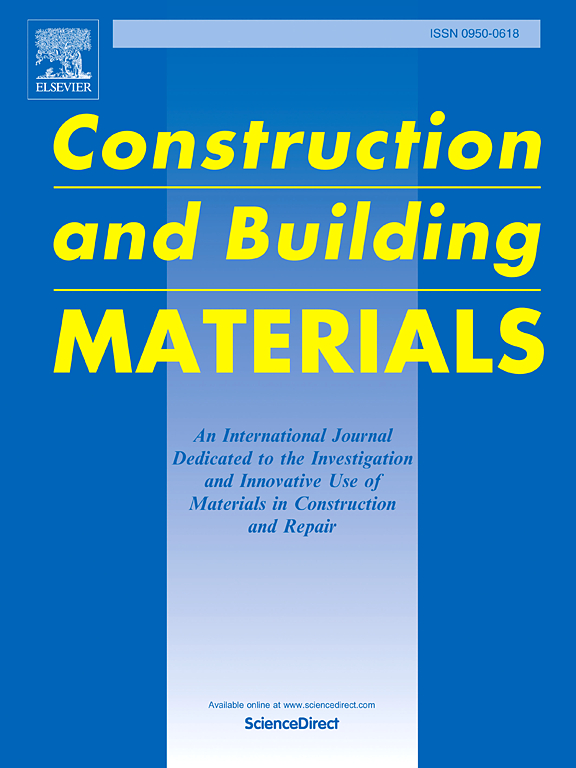3D打印FRP棒粘结性能评价
IF 7.4
1区 工程技术
Q1 CONSTRUCTION & BUILDING TECHNOLOGY
引用次数: 0
摘要
钢筋混凝土(RC)结构是钢筋和混凝土相互传递力以承受荷载的复合结构。随着新材料和新施工方法的提出,预计未来复合结构的加固方法和钢筋的形状将比传统的钢筋混凝土结构更加复杂。值得注意的是,钢筋的形状显著影响其与混凝土的粘结行为,有必要了解自由形状的钢筋如何影响粘结行为。近年来,工业3D打印(3DP)作为一个不断发展的领域引起了人们的关注,特别是基于塑料的3D打印技术,如纤维增强塑料(FRP)。这些有望成为阐明增强材料形状与其粘结性能之间关系的有力工具。然而,当使用通过3DP制造的FRP棒(3DP FRP)与混凝土进行粘结试验时,需要进行基础研究,包括此类试验的可行性。本研究首先考察了通过塑料基3d打印制造的碳纤维增强塑料(CFRP)棒评估粘合行为的可行性。在此基础上,该研究进一步研究了形状变化(如表面积增加、波纹度、扭曲、机械锚固以及它们的组合)如何影响粘结行为。试验结果表明,碳纤维加入碳纤维棒后,碳纤维棒的粘结性能可以通过拉拔试验来评价。此外,还发现形状变化的影响,包括表面积的增加、波纹度、扭曲和机械锚固,以及它们的组合,对粘结行为的影响可以进行定性评估。本文章由计算机程序翻译,如有差异,请以英文原文为准。
Bond behavior evaluation of FRP rods fabricated by 3D printing
Reinforced concrete (RC) structures are composite constructions in which steel reinforcement and concrete mutually transfer forces to withstand loads. With the proposal of new materials and construction methods, it is anticipated that future reinforcement methods and the shapes of reinforcements in composite structures will become more complex compared to conventional RC structures. Notably, the shape of reinforcements significantly influences their bond behavior with concrete, necessitating an understanding of how freely shaped reinforcements affect bond behavior. In recent years, industrial 3D printing (3DP) has garnered attention as a growing field, particularly plastic-based 3DP technologies, such as fiber-reinforced plastics (FRP). These are expected to serve as powerful tools for elucidating the relationship between the shape of reinforcements and their bond performance. However, when using FRP rods fabricated through 3DP (3DP FRP) for bond tests with concrete, fundamental studies, including the feasibility of such tests, are required. This study first examined the feasibility of evaluating bond behavior using Carbon Fiber Reinforced Plastics(CFRP) rods fabricated through plastic-based 3DP. Based on the results, the study further investigated how changes in shape—such as increased surface area, waviness, twisting, mechanical anchorages, and their combinations—affect bond behavior. The experimental results revealed that the bond behavior of CFRP rods can be evaluated through pull-out tests when carbon fibers are incorporated into the FRP rods. Additionally, it was found that the effects of shape changes, including increased surface area, waviness, twisting, and mechanical anchorages, as well as their combinations, on bond behavior can be qualitatively evaluated.
求助全文
通过发布文献求助,成功后即可免费获取论文全文。
去求助
来源期刊

Construction and Building Materials
工程技术-材料科学:综合
CiteScore
13.80
自引率
21.60%
发文量
3632
审稿时长
82 days
期刊介绍:
Construction and Building Materials offers an international platform for sharing innovative and original research and development in the realm of construction and building materials, along with their practical applications in new projects and repair practices. The journal publishes a diverse array of pioneering research and application papers, detailing laboratory investigations and, to a limited extent, numerical analyses or reports on full-scale projects. Multi-part papers are discouraged.
Additionally, Construction and Building Materials features comprehensive case studies and insightful review articles that contribute to new insights in the field. Our focus is on papers related to construction materials, excluding those on structural engineering, geotechnics, and unbound highway layers. Covered materials and technologies encompass cement, concrete reinforcement, bricks and mortars, additives, corrosion technology, ceramics, timber, steel, polymers, glass fibers, recycled materials, bamboo, rammed earth, non-conventional building materials, bituminous materials, and applications in railway materials.
 求助内容:
求助内容: 应助结果提醒方式:
应助结果提醒方式:


